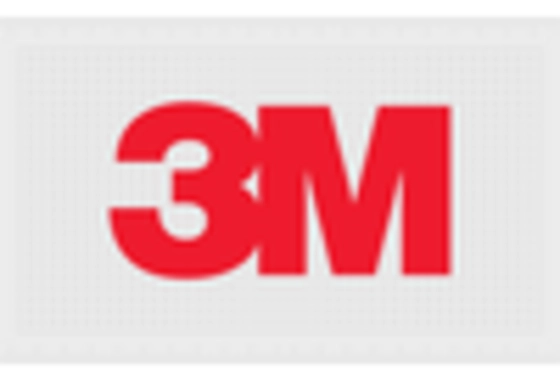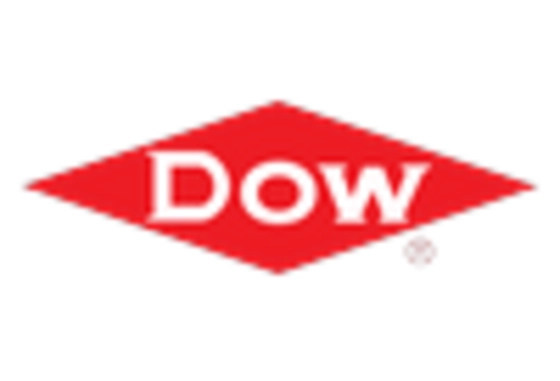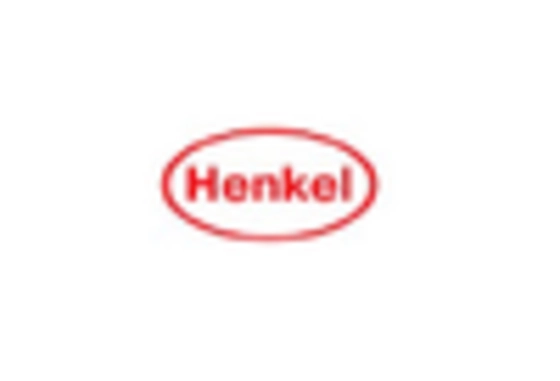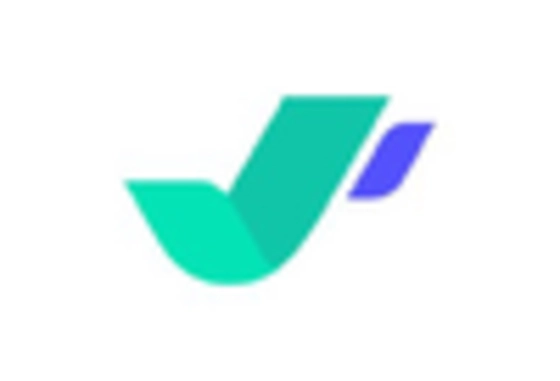Consumer Awareness
Consumer awareness regarding environmental issues is increasingly influencing the Low VOC Adhesive Market. As individuals become more informed about the health risks associated with high VOC emissions, there is a growing demand for safer, low VOC alternatives. This shift in consumer behavior is prompting manufacturers to prioritize the development of eco-friendly adhesive products. Surveys indicate that a significant percentage of consumers are willing to pay a premium for low VOC adhesives, reflecting a broader trend towards sustainability in purchasing decisions. Consequently, companies are investing in marketing strategies that highlight the benefits of low VOC products, thereby enhancing their market presence. This heightened awareness not only drives sales but also encourages further innovation within the industry, as businesses strive to meet the evolving expectations of environmentally conscious consumers.
Regulatory Influence
The Low VOC Adhesive Market is significantly shaped by stringent regulations aimed at reducing volatile organic compounds in various applications. Governments across multiple regions have implemented policies that restrict the use of high VOC adhesives, thereby promoting the adoption of low VOC alternatives. For instance, the Environmental Protection Agency has established guidelines that encourage manufacturers to develop products with lower emissions. This regulatory landscape not only drives innovation but also compels companies to reformulate their adhesive products to comply with these standards. As a result, the market for low VOC adhesives is projected to grow, with estimates suggesting a compound annual growth rate of around 6% over the next few years. This trend indicates a robust shift towards environmentally friendly solutions in the adhesive sector.
Competitive Landscape
The competitive landscape of the Low VOC Adhesive Market is characterized by a diverse array of players striving to capture market share through innovation and strategic partnerships. Major manufacturers are increasingly focusing on developing low VOC products to differentiate themselves in a crowded marketplace. This competitive dynamic is further intensified by the entry of new players who are introducing novel formulations and technologies. Market data suggests that established companies are also engaging in mergers and acquisitions to enhance their product portfolios and expand their reach. This trend not only fosters competition but also accelerates the pace of innovation within the industry. As companies vie for leadership in the low VOC segment, the overall market is likely to experience significant growth, driven by the continuous introduction of advanced adhesive solutions.
Technological Advancements
Technological advancements play a pivotal role in the evolution of the Low VOC Adhesive Market. Innovations in formulation chemistry have led to the development of new low VOC adhesive products that offer enhanced performance characteristics, such as improved bonding strength and faster curing times. These advancements are often driven by research and development initiatives within the industry, which focus on creating sustainable and efficient adhesive solutions. For example, the introduction of bio-based adhesives has gained traction, appealing to manufacturers seeking eco-friendly options. Market data indicates that the demand for such innovative products is on the rise, with projections suggesting that the segment could account for a substantial share of the overall adhesive market by 2027. This technological progress not only meets regulatory requirements but also aligns with consumer preferences for sustainable products.
Market Expansion Opportunities
The Low VOC Adhesive Market is witnessing numerous expansion opportunities across various sectors, including construction, automotive, and packaging. As industries increasingly adopt sustainable practices, the demand for low VOC adhesives is expected to rise. For instance, the construction sector is particularly focused on using low VOC products to comply with green building standards, which are becoming more prevalent. Market analysis suggests that the construction industry alone could account for a significant portion of the low VOC adhesive market by 2026. Additionally, the automotive industry is also shifting towards low VOC adhesives to enhance vehicle sustainability and meet regulatory requirements. This trend indicates a broader acceptance of low VOC adhesives across multiple applications, thereby creating a favorable environment for market growth.

















Leave a Comment